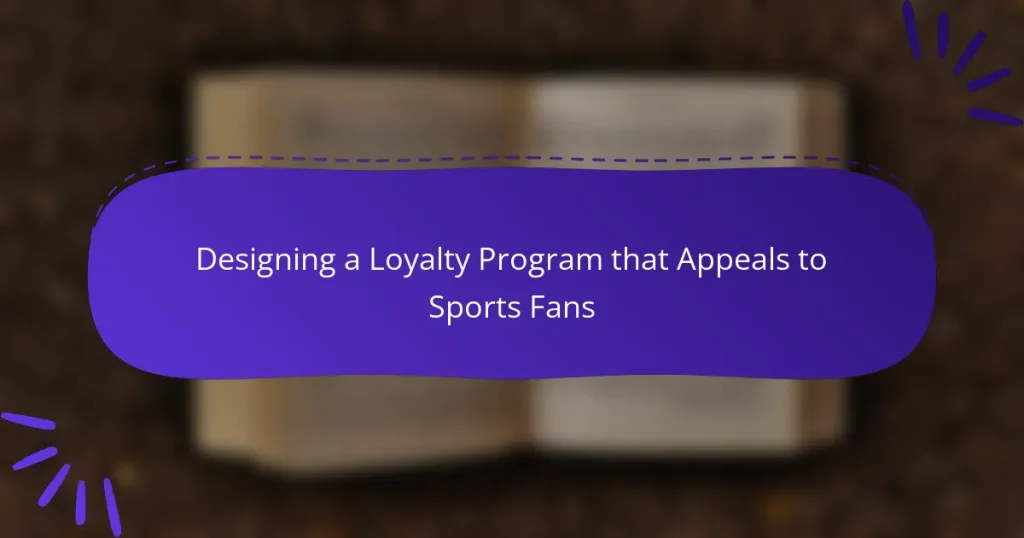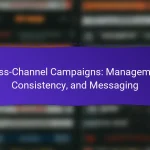Designing a loyalty program that appeals to sports fans requires a deep understanding of their passion and preferences. By offering unique experiences, personalized rewards, and exclusive access, brands can create a compelling program that fosters engagement and community connections. Incorporating features like a points system and partnerships with local teams can further enhance the overall experience for fans.
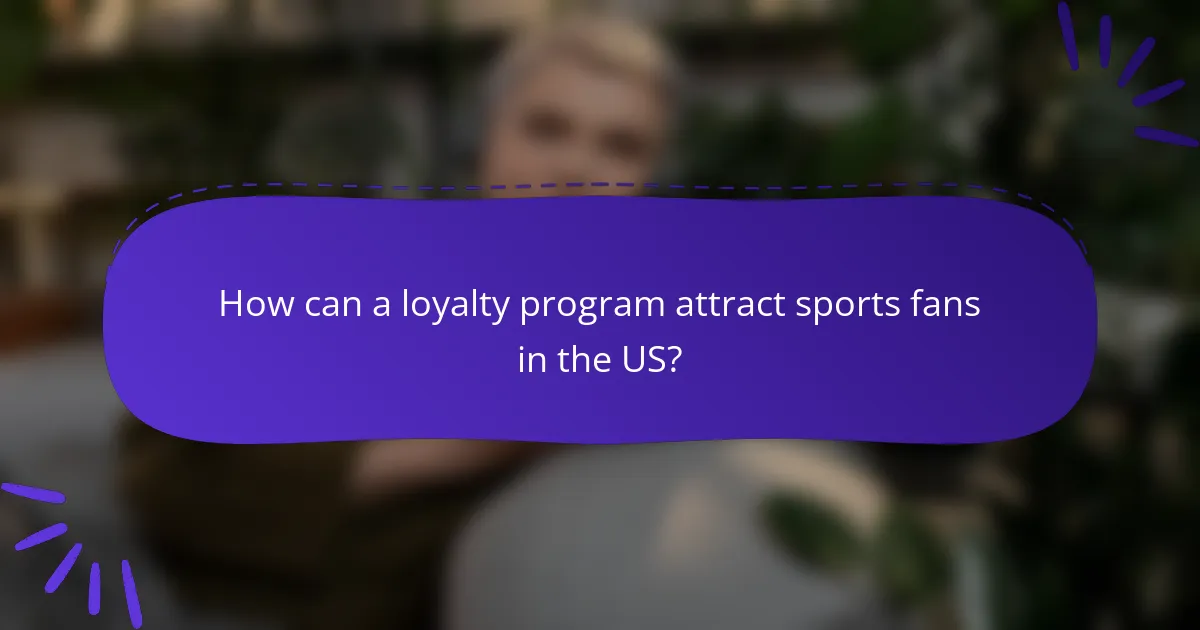
How can a loyalty program attract sports fans in the US?
A loyalty program can attract sports fans in the US by offering unique experiences and rewards that resonate with their passion for their favorite teams. By focusing on exclusive access, personalized rewards, and tiered membership levels, brands can effectively engage this enthusiastic audience.
Exclusive access to events
Providing exclusive access to events is a powerful way to attract sports fans. This could include pre-sale tickets for games, meet-and-greets with players, or VIP experiences at stadiums. Fans are often willing to pay a premium for these unique opportunities, making them a valuable component of a loyalty program.
Consider partnering with local teams or leagues to offer members-only events. For example, hosting a special viewing party for a championship game can create a sense of community and excitement among fans. This not only enhances the loyalty experience but also encourages word-of-mouth promotion.
Personalized rewards based on team preferences
Personalized rewards that align with fans’ team preferences can significantly enhance engagement. This might include discounts on merchandise for their favorite team, exclusive content, or tailored experiences that reflect their loyalty. Understanding fans’ preferences through data analytics can help in crafting these personalized offerings.
For instance, a loyalty program could offer rewards that change based on the season or significant events, such as playoff games or team anniversaries. This approach keeps fans invested and excited about the program, as they feel their loyalty is recognized and rewarded.
Tiered membership levels
Implementing tiered membership levels can motivate fans to engage more deeply with the loyalty program. By creating different levels—such as bronze, silver, and gold—fans can unlock increasingly valuable rewards as they accumulate points or make purchases. This structure encourages ongoing participation and enhances the overall experience.
For example, a gold member might receive exclusive access to a team dinner, while silver members could enjoy discounts on tickets. Clear communication about the benefits of each tier is essential to ensure fans understand how to progress and what they can gain from their loyalty.
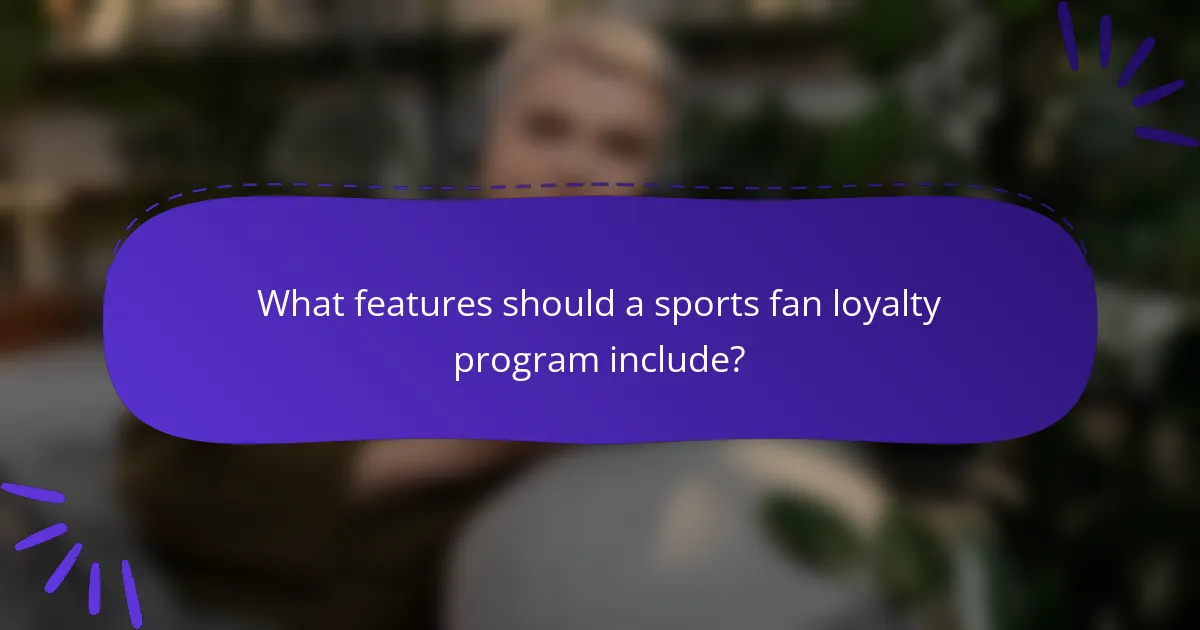
What features should a sports fan loyalty program include?
A successful sports fan loyalty program should incorporate features that enhance engagement, reward purchases, and foster community connections. Key elements include a points system for purchases, fan engagement activities, and partnerships with local sports teams to create a comprehensive experience for fans.
Points system for purchases
A points system allows fans to earn rewards based on their spending. For example, fans might earn one point for every dollar spent on merchandise or tickets, which can later be redeemed for discounts, exclusive items, or experiences. This encourages repeat purchases and increases overall spending.
Consider implementing tiered rewards, where fans achieve higher status levels based on accumulated points. This can incentivize more frequent purchases, as fans strive to reach the next tier for better rewards. A common structure might include bronze, silver, and gold levels, each offering progressively better benefits.
Fan engagement activities
Engagement activities are crucial for maintaining fan interest and loyalty. These can include exclusive events such as meet-and-greets with players, behind-the-scenes tours, or fan appreciation days. Such experiences create memorable connections between fans and the team.
Incorporating gamification elements, like contests or challenges that reward fans for participation, can further enhance engagement. For instance, fans could earn points for attending games, participating in social media campaigns, or completing surveys about their experiences.
Partnerships with local sports teams
Forming partnerships with local sports teams can significantly enhance a loyalty program’s appeal. Collaborations can provide fans with unique opportunities, such as exclusive access to team events or merchandise. This not only strengthens the loyalty program but also fosters a sense of community among fans.
Consider offering joint promotions, such as discounts on tickets for loyalty program members or special events hosted in collaboration with local teams. This can create a win-win situation, benefiting both the loyalty program and the partnered teams by increasing visibility and engagement.
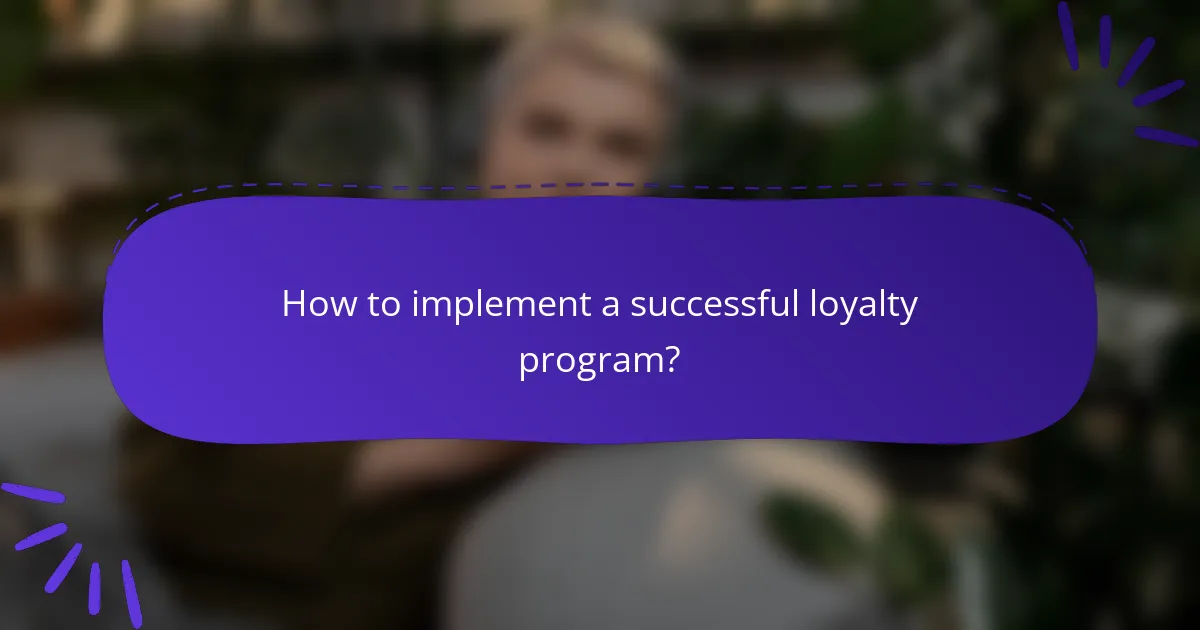
How to implement a successful loyalty program?
To implement a successful loyalty program for sports fans, focus on creating engaging experiences that resonate with their passion for the sport. This involves understanding their preferences, setting clear objectives, and continuously refining the program based on feedback and technology.
Define clear goals and objectives
Establishing clear goals and objectives is crucial for a loyalty program’s success. Determine what you want to achieve, such as increasing customer retention, boosting sales, or enhancing fan engagement. For example, aim to increase repeat purchases by 20% within a year.
Consider aligning your goals with specific fan interests, such as offering rewards for attending games or purchasing merchandise. This targeted approach can enhance the program’s effectiveness and appeal to sports enthusiasts.
Utilize customer feedback for improvements
Gathering and utilizing customer feedback is essential for refining your loyalty program. Regularly survey participants to understand their experiences and preferences, which can guide adjustments to rewards and engagement strategies. Aim for a feedback response rate of at least 10% to ensure diverse insights.
Incorporate feedback loops where fans can suggest new rewards or improvements. This not only enhances the program but also fosters a sense of community and belonging among participants.
Leverage technology for tracking
Utilizing technology for tracking customer interactions and rewards is vital for a successful loyalty program. Implement a robust system that monitors purchases, engagement levels, and reward redemptions. Mobile apps or digital platforms can streamline this process and provide real-time data.
Consider integrating customer relationship management (CRM) tools to analyze behavior patterns and tailor offers. This data-driven approach can help you personalize rewards, making them more appealing to sports fans and increasing overall satisfaction.
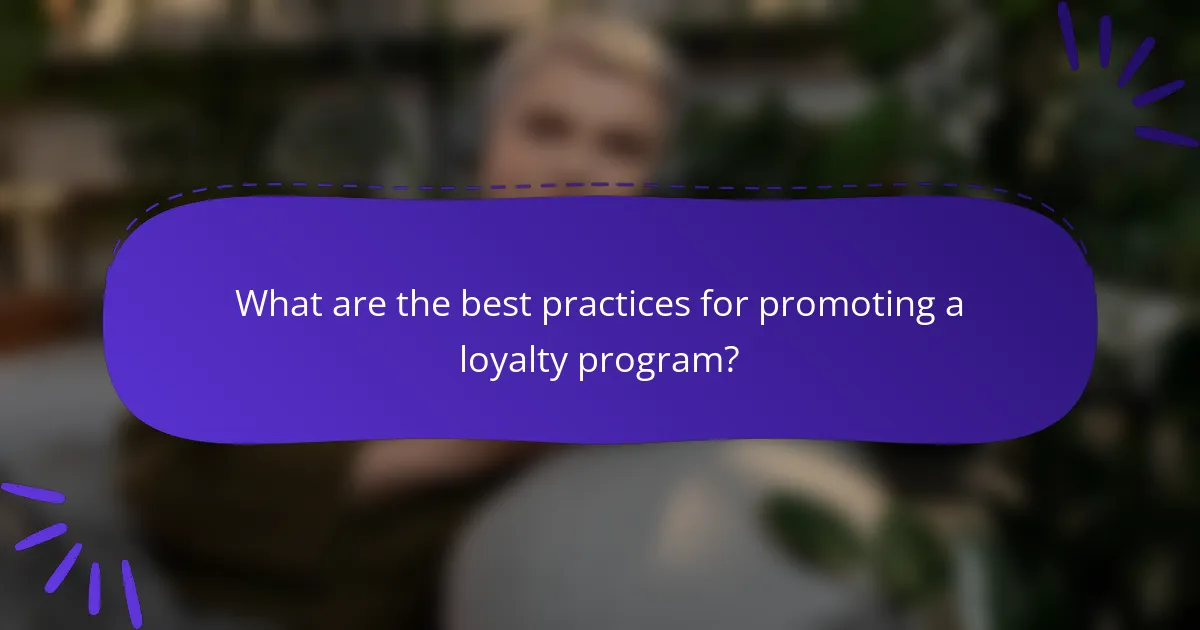
What are the best practices for promoting a loyalty program?
Effective promotion of a loyalty program for sports fans involves leveraging multiple channels to reach your audience. Focus on engaging content that resonates with fans and creates a sense of community around your brand.
Social media campaigns targeting sports communities
Utilizing social media platforms is essential for reaching sports fans. Create targeted campaigns that engage fans through interactive content, such as polls, contests, or giveaways that reward loyalty program members. Collaborate with local sports influencers to amplify your reach and credibility.
Consider using hashtags related to local teams or events to increase visibility. Regularly share updates about the loyalty program, including new rewards or exclusive experiences, to keep fans informed and excited.
Email marketing with exclusive offers
Email marketing remains a powerful tool for promoting loyalty programs. Send personalized emails to members featuring exclusive offers, such as discounts on merchandise or early access to tickets. Highlight the benefits of the loyalty program to encourage sign-ups and engagement.
Segment your email list based on fan interests or behaviors to tailor your messaging effectively. Use compelling subject lines and clear calls to action to increase open and click-through rates.
In-store promotions during game days
In-store promotions on game days can significantly boost loyalty program visibility. Offer special discounts or bonuses for loyalty members who shop during games, creating a sense of urgency and excitement. Consider setting up a dedicated area for loyalty program sign-ups to capture new members.
Engage fans with interactive experiences, such as photo booths or meet-and-greets with local athletes. Ensure staff are well-informed about the loyalty program to answer questions and promote it effectively during busy game days.

How to measure the success of a loyalty program?
Measuring the success of a loyalty program involves tracking key performance indicators that reflect customer behavior and program effectiveness. Focus on metrics like retention rates, average order value, and engagement levels to assess how well the program resonates with sports fans.
Customer retention rates
Customer retention rates indicate how effectively a loyalty program keeps fans engaged over time. A successful program typically aims for retention rates in the range of 60-80%, depending on the sport and market. Regularly analyze these rates to identify trends and make necessary adjustments.
To improve retention, consider offering exclusive rewards or experiences that resonate with your fan base, such as meet-and-greets with players or early access to tickets. Tracking churn rates can also provide insights into why customers leave the program.
Increased average order value
Increased average order value (AOV) measures how much customers spend per transaction, which can be influenced by loyalty programs. A well-designed program can boost AOV by encouraging fans to purchase more items or upgrade their selections. Aim for an increase of 10-30% in AOV after implementing loyalty incentives.
To enhance AOV, consider bundling products or offering tiered rewards that incentivize higher spending. For example, providing bonus points for purchases over a certain amount can motivate fans to spend more during game days or special events.
Engagement metrics from loyalty activities
Engagement metrics track how actively customers participate in loyalty program activities, such as redeeming rewards or participating in promotions. High engagement levels are crucial for the success of a loyalty program, with a target of at least 30-50% of members actively participating in activities.
Monitor metrics like participation rates in contests, social media interactions, and usage of loyalty app features. To boost engagement, create interactive campaigns that resonate with sports fans, such as fantasy leagues or gamified challenges that reward participation with points or prizes.
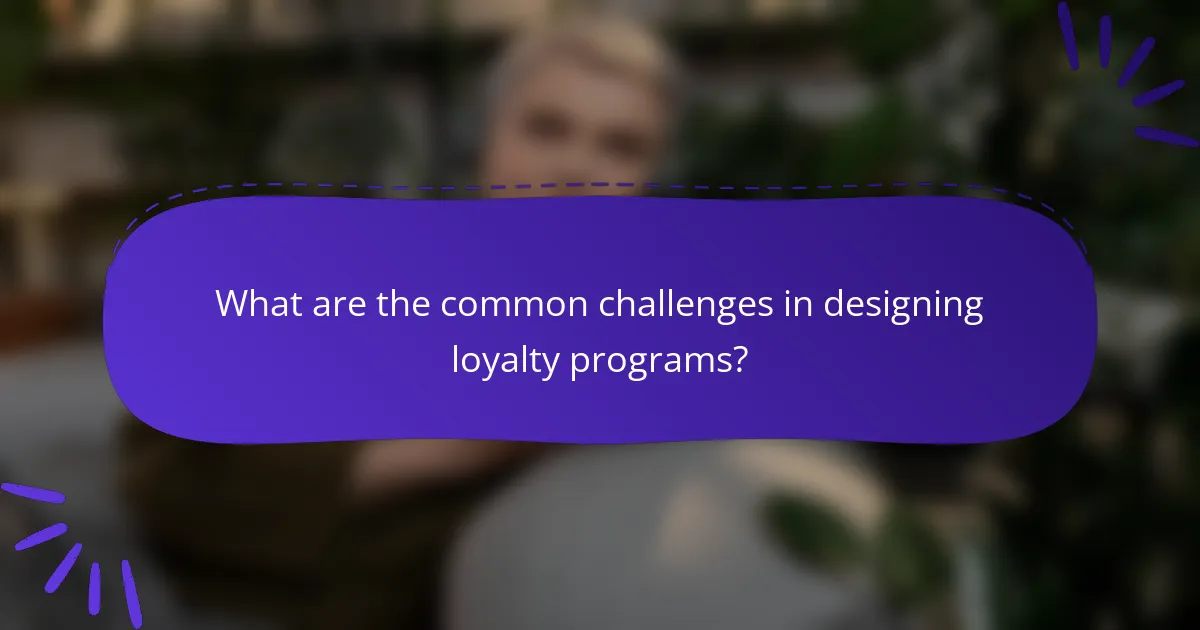
What are the common challenges in designing loyalty programs?
Designing loyalty programs often involves navigating several challenges that can impact their effectiveness. Key issues include balancing the rewards offered with the program’s profitability, maintaining customer engagement over time, and adapting to the evolving preferences of sports fans.
Balancing rewards with profitability
Finding the right balance between attractive rewards and maintaining profitability is crucial. Programs that offer overly generous rewards may lead to financial strain, while those that are too stingy can fail to engage fans. A common approach is to offer tiered rewards, where fans earn more as they engage more, ensuring that the program remains sustainable.
For instance, a sports team might provide exclusive merchandise or experiences for top-tier members, while offering smaller discounts or perks for lower tiers. This structure encourages fans to increase their spending to reach higher reward levels, benefiting both the fans and the organization.
Maintaining customer interest over time
Keeping fans engaged with a loyalty program requires ongoing effort and creativity. Programs can become stale if they do not regularly introduce new rewards or experiences. Regularly updating the offerings based on fan feedback and trends can help maintain interest.
For example, a sports team could rotate exclusive merchandise or host special events for loyalty members throughout the season. Implementing a points expiration policy can also incentivize fans to engage more frequently, ensuring that they remain active participants in the program.
Adapting to changing fan preferences
Sports fans’ preferences can shift due to various factors, including team performance, cultural trends, and technological advancements. A successful loyalty program must be flexible enough to adapt to these changes. Regularly conducting surveys or focus groups can provide valuable insights into what fans want from a loyalty program.
For instance, if fans show a growing interest in digital experiences, incorporating mobile app features or virtual meet-and-greets with players could enhance engagement. Staying attuned to these shifts ensures that the program remains relevant and appealing to its audience.
